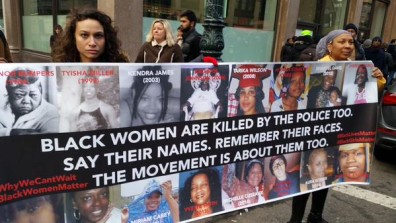The Rich White Man’s Burden: House Arrest In a Mansion
sarah.stoess
Many people know Oscar Pistorius as the first double leg amputee to perform at the Olympics. However, on February 14, 2013, Pistorius fatally shot his girlfriend, Reeva Steenkamp, in the bathroom of his estate in Pretoria, South Africa. There has been some controversy over whether Pistorius knew that Steenkamp was in the bathroom, which determines whether this was pre-meditated murder (after a domestic dispute on Valentine’s Day) or if he truly thought that there was an intruder in the house; the location where Steenkamp was sitting/standing/crouching in the bathroom; and whether he took the time to put his prosthetics on or if he was just on his “stumps.” The entirety of the facts of this case will probably never be known, because this all happened in the privacy of his own home.

During the trial, Oscar Pistorius showed a lot of emotion, including crying, or more like sobbing, as well as puking when he saw a picture of Steenkamp’s remains. However, he also seemed very confident that he would be released and be back on the track shortly.
Q: Were the emotions that Pistorius showed helpful or hurtful in his trial? Was he able to cry because he is an athlete who is confident in his masculinity? Was the perception of his masculinity, or lack thereof, misconstrued by him crying? Did his emotions thwart the outcome of his trial?
This case is very similar to the OJ Simpson case. Both OJ Simpson and Oscar Pistorius were athletes and were both accused of murdering their significant others. Being athletes, they are famous around the world and are also of a higher socioeconomic status. They are also more confident individuals in that they play sports at a highly competitive level. Therefore, they can be seen as dominant to their female significant others, especially with the use of a weapon.
Q: Which social construct is most important in this case: socioeconomic status, race, sexual orientation, or gender, or do all of them work together?

After 49 days in trial over a course of seven months, Oscar Pistorius was charged with culpable homicide. Culpable homicide is a lesser sentence than pre-meditated murder in South Africa, which is the rough equivalent of involuntary manslaughter in Anglo-American law, or the unlawful negligent killing of a human being.
Q: Do you think that Oscar Pistorius was charged with culpable homicide because of the fact that he was a well-known athlete? If he was an average human being, do you think that he would have received the same punishment?
Although he was sentenced to five years in prison, since both of his legs are amputated, he is expected to be staying in the hospital wing of the prison while he is in prison, away from most of the other prisoners. South Africa also has a law stating that for sentences of five years or less, you only have to be in prison for one-sixth of the time that you are sentenced; in his case, he is required to stay in prison for 10 months out of the five years that he was sentenced and then he can petition for house arrest for the remainder of the sentence. He was sentenced on October 21, 2014 and released on October 19, 2015 after spending just less than one year in prison and will now spend the next four years on house arrest at his uncle’s mansion (pictured below).

I chose to discuss Oscar Pistorius’ murder case, because he was just released from prison last week and is now on house arrest. Also, this case encompasses race, class, gender, and privacy. Steenkamp is a victim of homicide as a result of her being in a heterosexual relationship with Pistorius. Regardless of whether the act was purposeful or accidental, Steenkamp would not have died that night if she was not in a relationship with Pistorius. Although Steenkamp was a white victim, Pistorius, as a white man, did not receive as harsh of a sentence, in my opinion, as a black man would have received. However, Pistorius’ fame and social class also contributed to the lenient sentencing. A person living in a poverty also would not have received the same sentencing as Pistorius had. Finally, the fact that Pistorius did this in his own home and that there were no reliable witnesses, also contributed to this being sort of up in the air, not knowing the whole truth about the sequence of events that happened that night.
Q: Do you think that Pistorius’ lessened sentence (culpable homicide vs. murder) as well as the fact that he was released from prison to be sentenced to house arrest in a mansion devalues the life of Reeva Steenkamp? Should Pistorius be required to compensate the Steenkamp family for what he did?
Sources:
(2015). Q&A: What House Arrest Means For Oscar Pistorius. Sky News. Retrieved from http://news.sky.com/story/1572812/q-and-a-what-house-arrest-means-for-oscar-pistorius
(2014). Oscar Pistorius Trial: Evidence. BBC News. Retrieved from http://www.bbc.com/news/world-africa-26417240
Phipps, C. (2014). Oscar Pistorius Trial: The Full Story, Day By Day. The Guardian. Retrieved from http://www.theguardian.com/world/2014/oct/21/oscar-pistorius-trial-full-story-reeva-steenkamp

